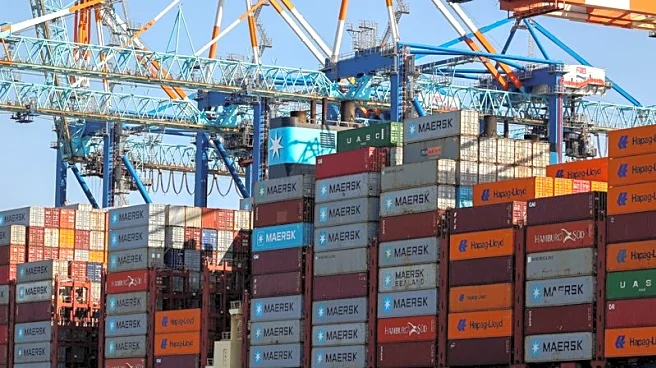What's Happening?
The latest edition of the Trucking Conditions Index (TCI), released by freight transportation consultancy FTR, indicates modest improvements in the U.S. trucking market. The TCI, which tracks changes in freight volumes, freight rates, fleet capacity,
fuel prices, and financing costs, recorded a reading of 0.3 for August. This marks an improvement from July's -1.03 and June's -1.83, the lowest in 2025. A TCI reading above zero suggests an adequate trucking environment, while readings above 10 indicate favorable conditions for carriers. The August improvement was driven by less challenging freight rates and positive, albeit not strong, utilization rates. FTR's Vice President of Trucking, Avery Vise, noted the potential for a capacity-driven recovery due to restrictions on commercial driver’s licenses for foreign drivers, although the impact on market conditions remains unclear.
Why It's Important?
The modest gains in the Trucking Conditions Index are significant as they suggest a stabilization in the trucking industry, which is crucial for the broader U.S. economy. Trucking is a vital component of the supply chain, affecting the movement of goods across the country. The improvement in the TCI could signal better conditions for carriers, potentially leading to more stable freight rates and improved profitability. However, the ongoing restrictions on commercial driver’s licenses for foreign drivers could impact capacity, influencing market dynamics. This development is particularly relevant for stakeholders in the logistics and transportation sectors, as it may affect operational strategies and financial planning.
What's Next?
FTR forecasts improved market conditions in 2026 and 2027, with the potential for a capacity-driven recovery in the trucking industry. The impact of restrictions on commercial driver’s licenses for foreign drivers will be a key factor to watch, as it could significantly affect capacity and market conditions. Stakeholders in the trucking industry will need to monitor these developments closely, as they could influence hiring practices, operational strategies, and regulatory compliance. The trucking industry may also see increased pressure to adapt to these changes, potentially leading to shifts in market dynamics and competitive strategies.














